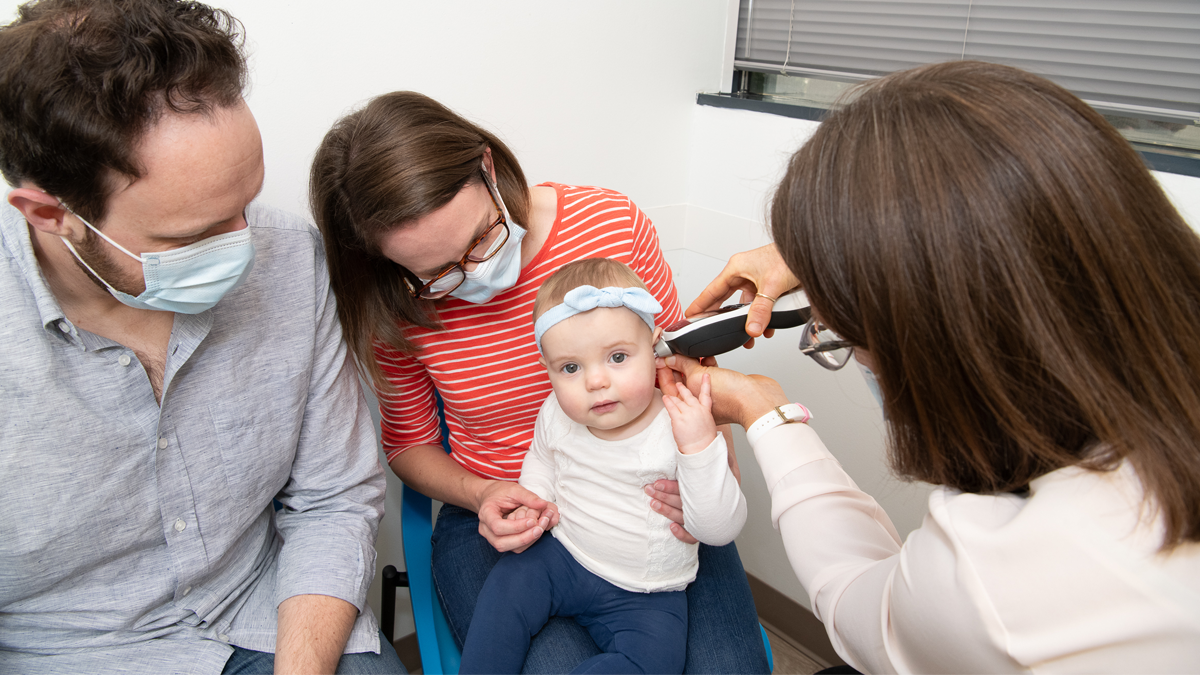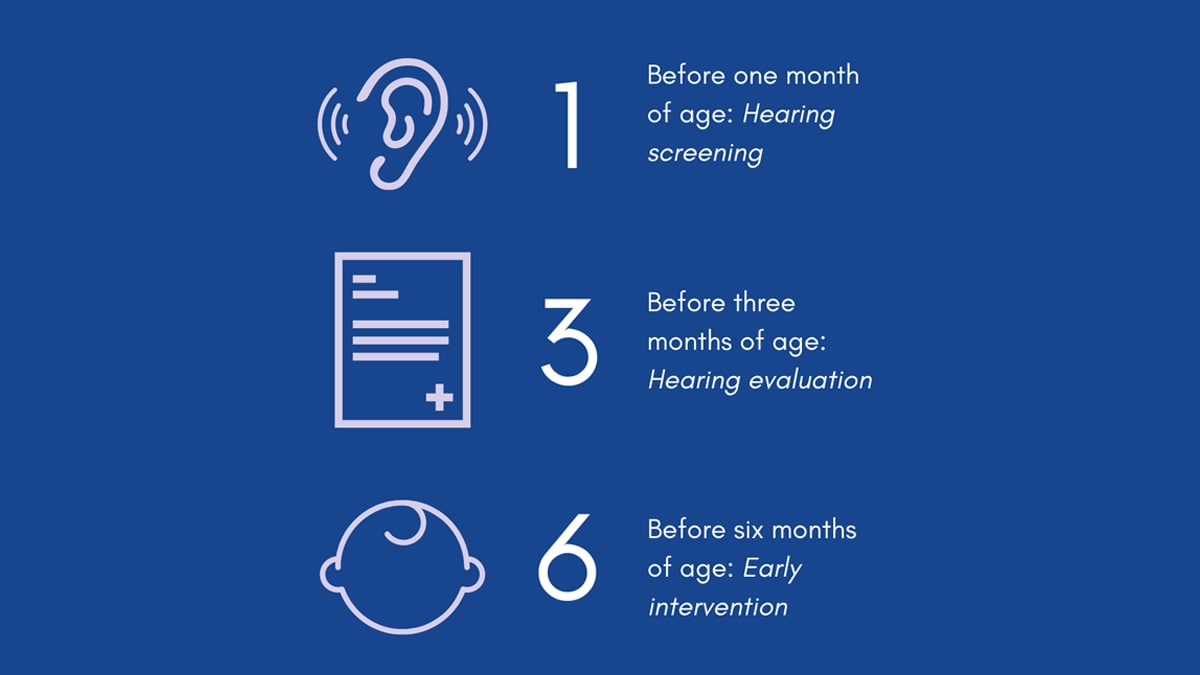What to know
Despite the impacts of the COVID-19 pandemic on the Early Hearing Detection and Intervention (EHDI) system, more than 6,000 infants with permanent hearing loss born in 2020 were identified through newborn screening. The near-universal (95%) rate of hearing screening of newborns represents an important public health prevention program that was able to withstand the many pressures of a pandemic.

Key findings
A data perspective article from CDC and partner organizations is available in the Journal of Early Hearing Detection and Intervention. In 2020, reductions were seen in follow-up diagnosis and access to services among infants who failed their newborn hearing screening. The article discusses factors that likely impacted follow-up diagnosis and intervention services among these infants.
Recommended EHDI benchmarks include screening for hearing loss before 1 month of age, diagnostic evaluation before 3 months of age, and enrollment in early intervention before 6 months of age, also known as the 1-3-6 benchmarks.

Each year, CDC reports progress in meeting the national benchmarks through the Hearing Screening and Follow-up Survey (HSFS). Recently reported 2020 HSFS data highlight the potential impacts of the COVID-19 pandemic on the EHDI process:
- Hearing screening remained the same. The screening rate (95%) remained high in 2020, suggesting that newborn screening programs continued to be a standard of newborn care even during a pandemic.
- Diagnostic evaluation decreased. A little over one third (36.4%) of infants who failed their final hearing screens completed a diagnostic evaluation before 3 months of age. This is a noticeable decrease from previous years, when nearly half (2018: 49.5% and 2019: 49.1%) met this benchmark.
- Early intervention decreased. Enrollment into intervention services for infants with diagnosed hearing loss before 6 months of age declined from 46.7% in 2018 to 44.5% in 2020.
- Loss to follow-up and loss to documentation increased. The loss to follow-up/loss to documentation rate in early intervention among infants diagnosed with permanent hearing loss increased from 17.7% (2018) to 19.5% (2020). This difference represents 116 infants with permanent hearing loss not receiving, or not documented to be enrolled in, intervention services.
Possible barriers to diagnosis and intervention discussed include staffing shortages, facility closures, limited hours for outpatient procedures, families that were sick or quarantining, and hesitancy among parents or caregivers to return for follow-up services due to exposure concerns.
As the COVID-19 pandemic continued beyond 2020, jurisdictional EHDI programs and providers have implemented strategies adapting to pandemic-related challenges to be able to continue to serve children and families. These include:
- Developing specific guidance establishing that newborn hearing screening and follow-up should be considered an essential service and not delayed due to COVID-19,
- Increasing the use of telehealth to provide intervention services, and
- Upgrading EHDI-Information Systems to improve the timeliness of referrals and better support Child Find activities.
Resources
For more information about CDC’s resources, please visit
- Likely Impact of the COVID-19 Pandemic on Newborn Hearing Screening and Follow-up Services in the United States in 2020
- Hearing Loss in Children Homepage
- Educational Materials
- Podcast in English [PODCAST – 10:46 minutes] or in Spanish [PODCAST – 13:11] on Early Hearing Detection and Intervention
